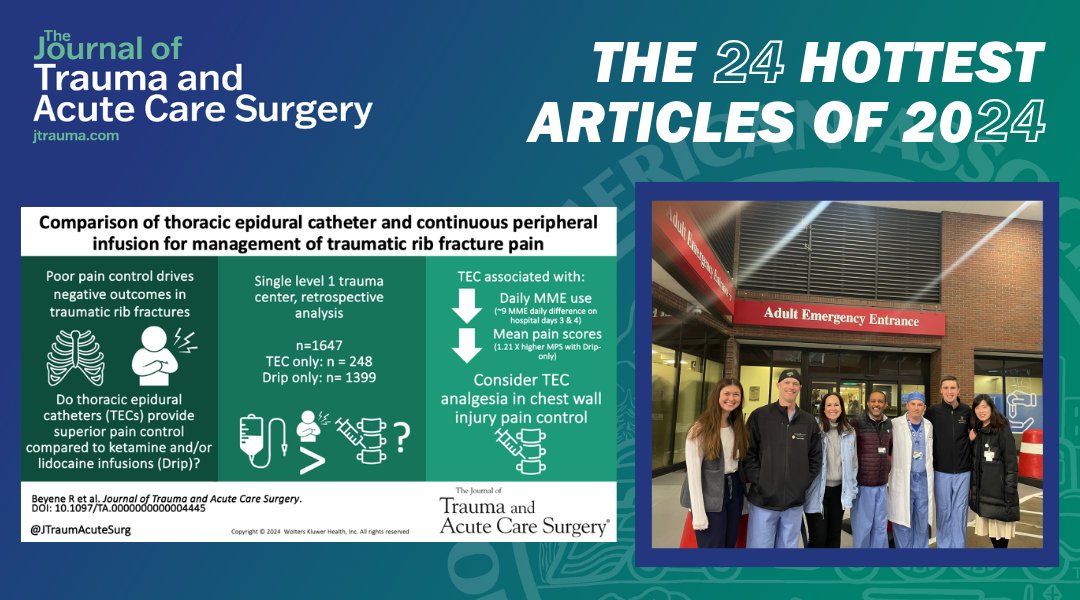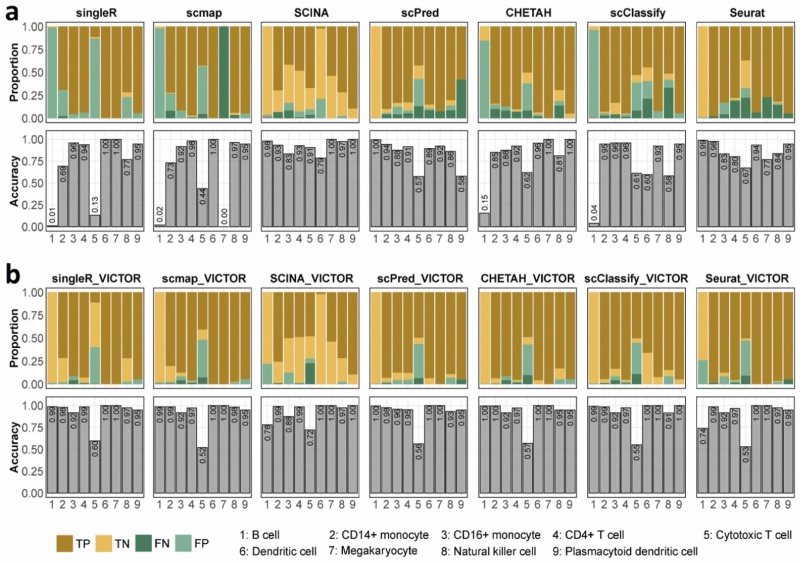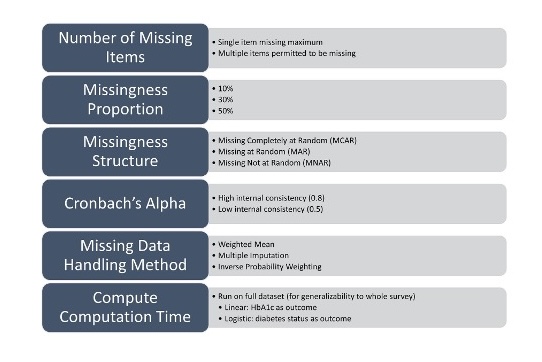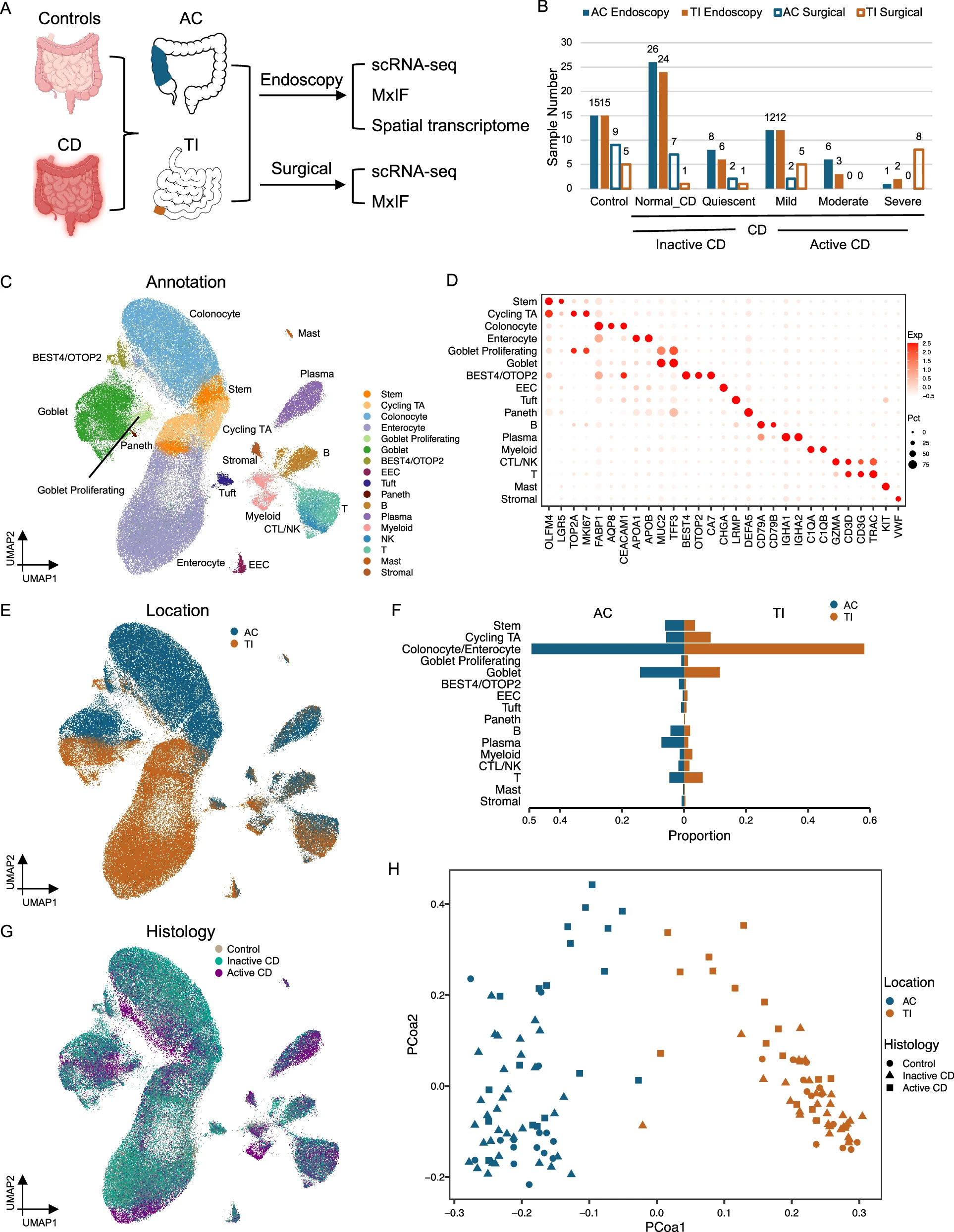Study in multiancestry populations uncovers new insights into breast cancer genetics
Associate professor Ran Tao co-authored this study.
VUMC study shows identifying changes in vision may be sufficient to diagnose mild TBI
Co-authors of the featured paper include professor Qingxia "Cindy" Chen and senior biostatistician Xiangyu Ji.
Proteomic signature a key to early detection of fatty liver disease: study
This paper's co-authors include senior statistical genetic analyst Joey Stolze, assistant professor Shilin Zhao, and research assistant professor Shi Huang.
Ye and Irlmeier co-authors of a "hottest" JTrauma article of 2024

Congratulations to professor <Fei Ye (right) and senior biostatistician Rebecca Irlmeier (MS, 2020) on the naming of a paper they co-authored as one of the 24 Hottest Articles of 2024 by The Journal of Trauma and Acute Care Surgery. "Comparison of thoracic epidural catheter and continuous peripheral infusion for management of traumatic rib fracture pain" was originally published online ahead of print on September 13, 2024 (click title to view).
Jamie Joseph is first author of Child Abuse & Neglect paper
Congratulations to 2024 graduate Jamie Joseph, PhD, on the publication of "Analysis of longitudinal patterns of child maltreatment reports in the United States," which was published online ahead of print on December 24; it is scheduled to appear in the February 2025 issue of Child Abuse & Neglect. Associate professor Rameela Raman is senior and corresponding author of this paper. Co-authors include researchers at Northwestern, University of Kentucky, Vanderbilt's Division of Child and Adolescent Psychiatry, and the Vanderbilt Center for Excellence for Children in State Custody.
Dr. Joseph, Dr. Raman, and their collaborators used National Child Abuse and Neglect Data System (NCANDS) data to quantify geographic variation in child maltreatment rate trajectories, with the larger goal of helping states "identify local risk factors to guide program development and resource allocation." The team found "three groups of states with distinct child maltreatment trajectories, with majority of the states following a stable trajectory over time. There was not a consistent trend in socioeconomic characteristics between the three groups. While the results do not allow us to draw firm conclusions about socioeconomic characteristics associated with maltreatment trajectories, it does provide data-driven evidence for the existing assumption of a national average maltreatment trajectory."
Dr. Joseph is now a biostatistics faculty member at Henry Ford Health. Dr. Raman recently chaired the department's 2024 retreat and served as the American Statistical Association's Middle Tennessee representative to the Council of Chapters the past two years. For more about Dr. Raman's mentoring of Dr. Joseph, see the May 2023 thank-you note from Dr. Joseph published in AmStatNews.

Figure 2 from Joseph et al., "Analysis of longitudinal patterns of child maltreatment reports in the United States." State-level chloropeth map using the three unique trajectories obtained from the latent trajectory model.

New research points way to more reliable brain studies
PhD candidate Kaidi Kang is first author of the study, with advisor Simon Vandekar as corresponding senior author. Co-authors include PhD candidates Jiangmei Xiong and Megan Jones, associate professor Ran Tao, and professor Jonathan Schildcrout.
All-department team publishes paper in Computational and Structural Biotechnology Journal
Congratulations to former visiting student Chia-Jung "Charlene" Chang (PhD candidate in biomedical engineering at National Cheng Kung University), research assistant professor Chih-Yuan Hsu, and professors Qi Liu and Yu Shyr on the publication of "VICTOR: Validation and inspection of cell type annotation through optimal regression." The article on this new method appeared online ahead of print on October 15 and will go to press as part of Computational and Structural Biotechnology Journal's December issue. As described in the paper's abstract:
Single-cell RNA sequencing provides unprecedent opportunities to explore the heterogeneity and dynamics inherent in cellular biology. An essential step in the data analysis involves the automatic annotation of cells. Despite development of numerous tools for automated cell annotation, assessing the reliability of predicted annotations remains challenging, particularly for rare and unknown cell types. Here, we introduce VICTOR: Validation and inspection of cell type annotation through optimal regression. VICTOR aims to gauge the confidence of cell annotations by an elastic-net regularized regression with optimal thresholds. We demonstrated that VICTOR performed well in identifying inaccurate annotations, surpassing existing methods in diagnostic ability across various single-cell datasets, including within-platform, cross-platform, cross-studies, and cross-omics settings.

Figure 1 in the paper provides an " One example in diagnosing the reliability of cell annotations. a) diagnostic performance of singleR, scmap, SCINA, scPred, CHETAH, scClassify, and Seurat. b) diagnostic performance of VICTOR when applied to annotations from singleR, scmap, SCINA, scPred, CHETAH, scClassify, and Seurat.

First-authored paper in JAMIA by Andrew Guide
Congratulations to senior biostatistician Andrew Guide on first-authorship of "Balancing efficacy and computational burden: weighted mean, multiple imputation, and inverse probability weighting methods for item non-response in reliable scales," an article published in JAMIA: A Scholarly Journal of Informatics in Health and Biomedicine on August 13. Co-authors include assistant in biostatistics Shawn Garbett, senior biostatistician Xiaoke (Sarah) Feng, and professor Qingxia (Cindy) Chen, who is the paper's corresponding author, with colleagues in VICTR, DBMI, and Ohio State's Department of Internal Medicine. The study examined ways of interpreting non-responses to the Physical Activity Neighborhood Environment Scale (PANES) in the All of Us survey and to what degree computationally intensive approaches are advisable. In the words of Guide and his co-authors, their goal is "to inform researchers on considerations for handling incomplete data in participant surveys, utilize the data received as efficiently and accurately as possible, and better understand how to use surveys with missingness to conduct accurate research." Guide, Garbett, Chen, and some other team members published another paper on interpreting All of Us data earlier this year; Guide, Garbett, and Feng also served as teaching asistants in this year's Summer Institute short course on the All of Us research program.

Figure 1 in Guide et al., "Balancing efficacy..." For the full caption, view the figure at its journal page or within the full paper.
First-authored paper in Nature Communications by Jia Li
Congratulations to postdoctoral fellow Jia Li, professor and chair Yu Shyr, and professor Qi Liu on the August 22 publication of Identification and multimodal characterization of a specialized epithelial cell type associated with Crohn’s disease (CD) in Nature Communications. Dr. Li is first author of the paper and Dr. Liu its corresponding author. The team's study of terminal ileum and ascending colon (LND) cells in CD patients has led to findings that "suggest a potential pathogenic role" for such cells in inflammatory bowel disease (IBD).

Figure 1 from the paper. Visit it at the publication site for the full caption.
Epigenetic change to DNA associated with cancer risk in "multi-omics" study
This study was co-authored by professor Fei Ye.